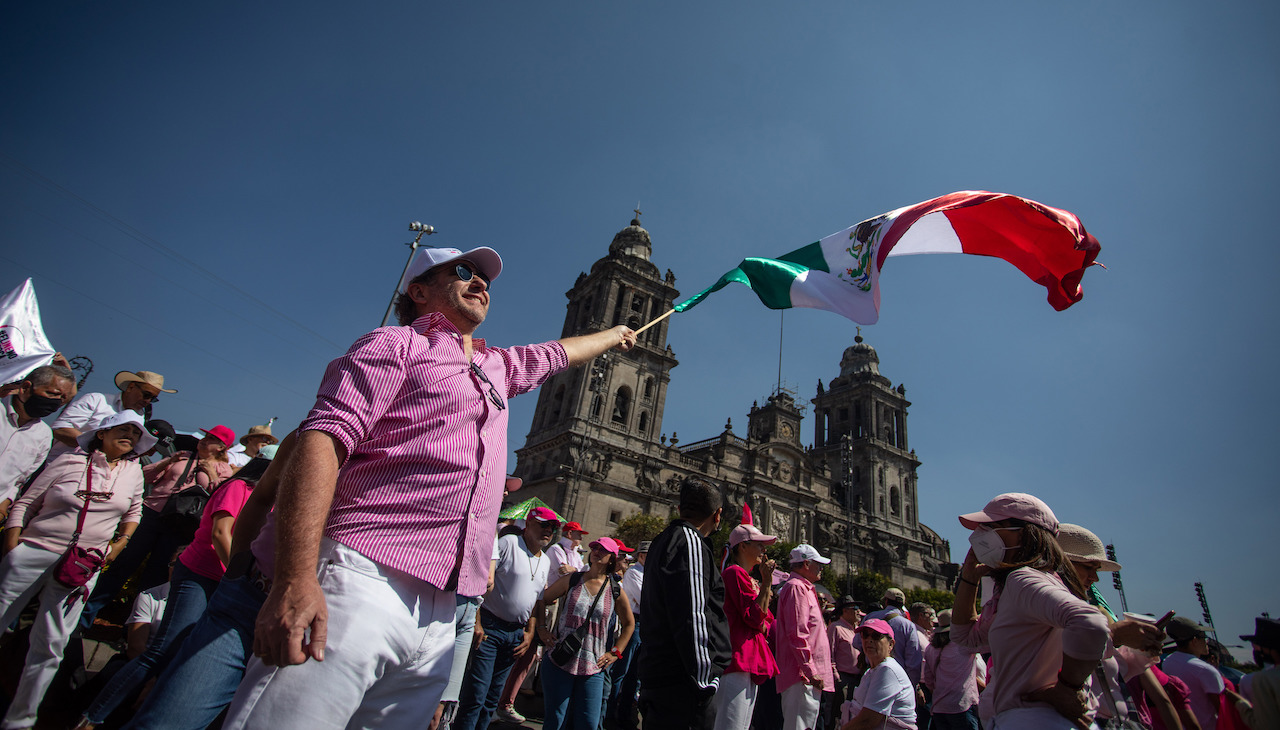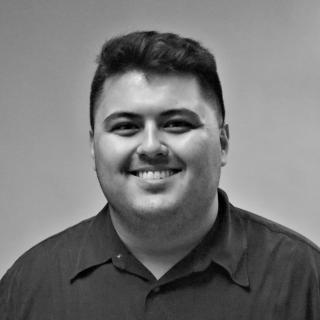
Hundreds of thousands across Mexico protest controversial changes to the country’s election watchdog
Organizers say over 500,000 protested in the central Zocalo Square of the capital with demonstrations scattered across 100 cities.
Political and civil unrest was at the root of mass protests held in over 100 Mexican cities across the country on Sunday, Feb. 26, demonstrating against the recent decision by Mexico’s Senate — and spearheaded by Mexico President Andrés Manuel López Obrador — to do a complete reform and overhaul of the country’s election watchdog.
Called “Plan B,” it was passed on Wednesday, Feb. 23 by a 72-50 vote that many critics say will undermine and weaken democracy despite one of the main supporters of the measure, AMLO, saying it’ll save money — upwards of over $150 million — and reduce political privileges.
His Moreno party controls Congress and Mexico has a presidential election in 2024. While AMLO himself cannot run for re-election, his party is a huge favorite of once again winning.
Roughly 60% of Mexicans view AMLO favorably with his appeal coming from going against wealthy government bureaucrats, and specific anger towards how several top electoral officials are paid more than the president.
The measure will significantly decrease salaries for staffers, funding for local election offices including training for Mexican citizens in charge of polling stations. It’ll also cut down on sanctions for candidates who fail to report campaign spending.
Organizers say 500,000 people alone marched on the city's central Zocalo Square while the Mexican government put the number at just 90,000. Several thousand others spilled into the nearby streets of Mexico City when the plaza filled to capacity.
AMLO was sure to hear the discontent occurring so nearby as the national palace is located on the edge of the square plaza.
Marchers chanted “Don’t touch my vote!” and wore the pink and white colors of the National Electoral Institute — or as millions of Mexicans know it as — the fiscal watchdog that ended one-party rule in Mexico back during the 2000 Presidential election that saw Vicente Fox win and become the first president not from the Institutional Revolutionary Party (PRI) since 1929. He was also the first elected from an opposition party since Francisco I. Madero in 1911.
Millions of Mexicans across the country look at the 2000 breakthrough as a huge moment in their history and a pillar of their modern day democracy, and feel that the incoming changes will only take the country back to a more totalitarian time.
The measure was proposed by AMLO last December after not getting enough votes in Congress for a constitutional reform that held even larger electoral changes and he’s spent the last few months trying to convince others of the measure, saying that it looks to cut the National Electoral Institute’s huge budget and end its privileges.
AMLO and his many supporters have not been the biggest fans of the country’s electoral institute since 2006, when he was within 0.56% of the vote of winning the presidency and called his loss fraudulent.
This time was also marked by a conflict between AMLO, then the Mayor of Mexico City and Fox, a conservative from the Mexican party Partido Acción Nacional (PAN). The Fox administration tried and failed to remove López Obrador from office and stop from participating in the presidential elections.
Even when the same institute confirmed his landslide victory in 2018, AMLO has always denounced it and specifically complained of the costliness to run elections in Mexico and looked for a way to decrease its budget.
He has twice alleged he was robbed in presidential elections before 2018.
Compared to other national Presidential elections, Mexico’s elections are expensive, in part because nearly all legal campaign financing is, by law, provided by the federal government.
RELATED CONTENT
AMLO’s overhaul would change that, and electoral officials as well as protestors argue that the idea of a free and fair election is threatened by the overhaul. With a crucial election in 2024, it’s a huge worry.
Protests were held in over 100 states across the large country, including Jalisco, Yucatan, Nuevo Leon, Queretaro, Guanajuato and Veracruz, according to Mexican news reports.
According to the newspaper Excelsior, roughly 22,000 people were in the Nuevo Leon capital Monterrey. News network Milenio reported over 20,000 on the streets of the Jalisco capital of Guadalajara.
The news of the conviction of Genaro García Luna — a former Mexican government official who served as Secretary of Public Security in the Felipe Calderon cabinet — was also felt during the protests.
He was found guilty on Feb. 21, of taking bribes from cartels. The verdict passed down from a Brooklyn jury is seen in Mexico as potentially harmful to PAN, the opposition party associated with the protestors on Sunday.
A mass protest as such as has been only seen during the 2000 and 2006 Presidential elections and more than 50 years ago with the Mexican Movement of 1968, also known as the Mexican Student Movement (Movimiento Estudiantil).
It was a mass coalition of students from the nations top universities who amassed worldwide support for political change in Mexico. The movement called for greater political freedoms and an end to the authoritarianism of the PRI regime that had been in power since 1929.
Student mobilization happened across many campuses across the country and was supported by many sectors of Mexican civil life including workers, merchants, intellectuals, and others.
1968 was a tumultuous year not just for Mexico but across the globe as well, where protests concerning the Vietnam War and the Civil Rights movement were occuring in the U.S., just up north.
The movement was violently overpowered by the government after several mass demonstrations that resulted in the massacre of many protestors during a peaceful demonstration on Oct. 2, 1968, known as the Tlatelolco Massacre.











LEAVE A COMMENT: